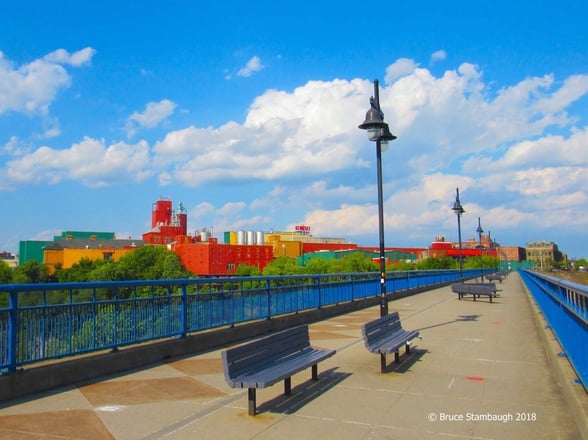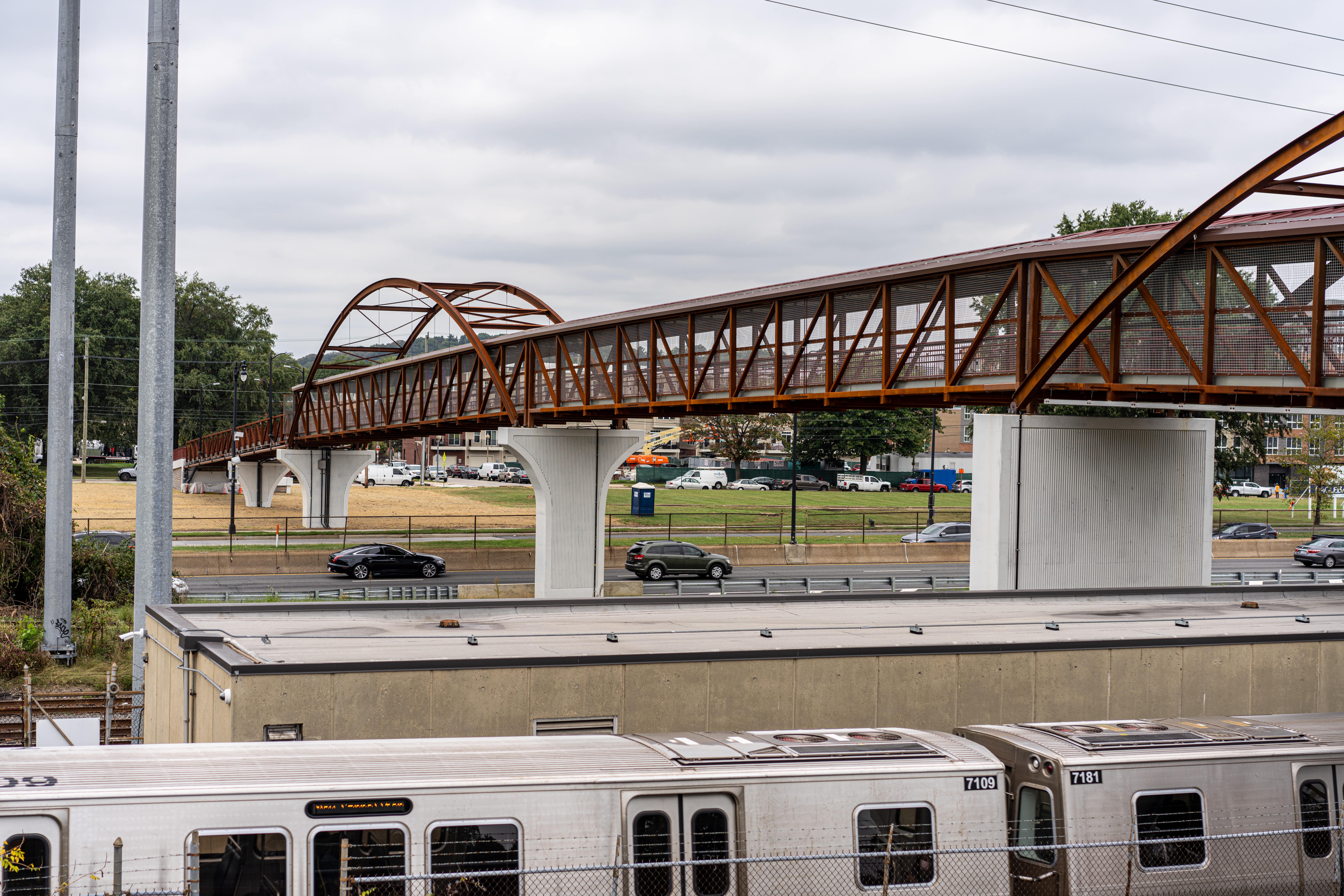
When it comes to designing a fiber reinforced polymer (FRP) cantilever sidewalk, there are a number of functional and load requirements one must consider. For example, will the sidewalk accommodate both bicyclists and pedestrians? Commuters or recreationists? Will daily traffic volumes be high or low? Will the sidewalk be the epicenter for viewing special events? Usage influences width, especially when you need to accommodate pedestrians and cyclists. The need for social distancing in the foreseeable future is also a variable that affects sidewalk widths. We are currently seeing rising demand for sidewalks 14 feet to 15 feet wide.
From a functional perspective, installing a sidewalk on both sides of a bridge is a better design and safer. Pedestrian traffic does not have to cross the roadway to access a single sidewalk on the other side of the bridge. (We have seen examples of going under the bridge approach to do this safely.) Two sidewalks give a bridge owner some flexibility when it comes to width. Lower traffic volumes may also make the use of two sidewalks a better fit for the structure’s capabilities.
Railing choices are typically dictated by aesthetics, function and safety. And since there are a number of railing styles available, communities can usually find one that is consistent with surrounding hardware. A railing height of 42 inches is suitable for pedestrian use while a railing height of 54 inches is preferred for bicycle use.
Surface overlay is another very important component of sidewalk aesthetics and safety. If the sidewalk is being used largely by pedestrians that means running children that might fall. You want a non-slip product that is safe, but has a surface texture that won’t be too hard on small knees. Color options add a wow factor to the sidewalk and the use of multiple colors can be used to help direct traffic flow. Composite Advantage’s (CA) FRP sidewalks use a commercial polymer aggregate system. To find out more, read our “No Slipping” blog.
We’ve established that loads are based on the width of the sidewalk which is dictated by how it will be used. The following checklist gives you some performance parameters:
- Pedestrian live load is 90 pounds per square foot for all sidewalks. This includes a sidewalk full of people watching events like fireworks.
- For sidewalks 7 feet to 10 feet wide, a maintenance vehicle [AASHTO H-5 vehicle weighing 10,000 pounds] will be required to use the sidewalk.
- Sidewalks greater than 10 feet wide must be able to accommodate an ambulance [AASHTO H-10 vehicle weighing 20,000 pounds].
